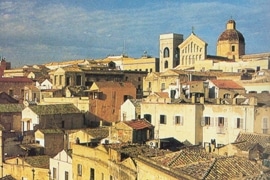Sardinia What Is Known For
SIGHTSEEING
Nobody knows exactly where they came from, but the settlers who came to the island about 1500 B.C. built a remarkable network of more than 25,000 stone fortresses known as nuraghi. Today about 7,000 of the truncated cone structures remain, and for a look at the most spectacular, head to Barumini in the center of the southern part of the island, about halfway between the capital of Caligari and Oristano. The site, complete with a three-story Bronze Age tower with a vaulted chamber was named to Unesco's World Heritage List in 1997.
CULTURE
Sardinia's calendar is filled year-round with some of the most colorful folk festivals in the Mediterranean, and for sheer excitement, few can match the breakneck horse races that bring Carnival to a close in February in the streets of Santu Lussurgiu (and a handful of other towns). Another contender? In July, the town of Sedilo commemorates a 4th-century battle with three days of horse races around the Sanctuary of St. Antine.
DINING
Strange that a Mediterranean island's cuisine would derive its culinary traditions not from the sea but the land, but that's the case on Sardinia, where roasting pigs and goats luau-like in underground pits is a time-honored tradition, and breads and pastas are imaginative staples. Try the Sardinian version of ravioli, culingiones, ball-shaped and stuffed with spinach (or beet tops), pecorino cheese (or ricotta), sometimes potatoes and even saffron.
